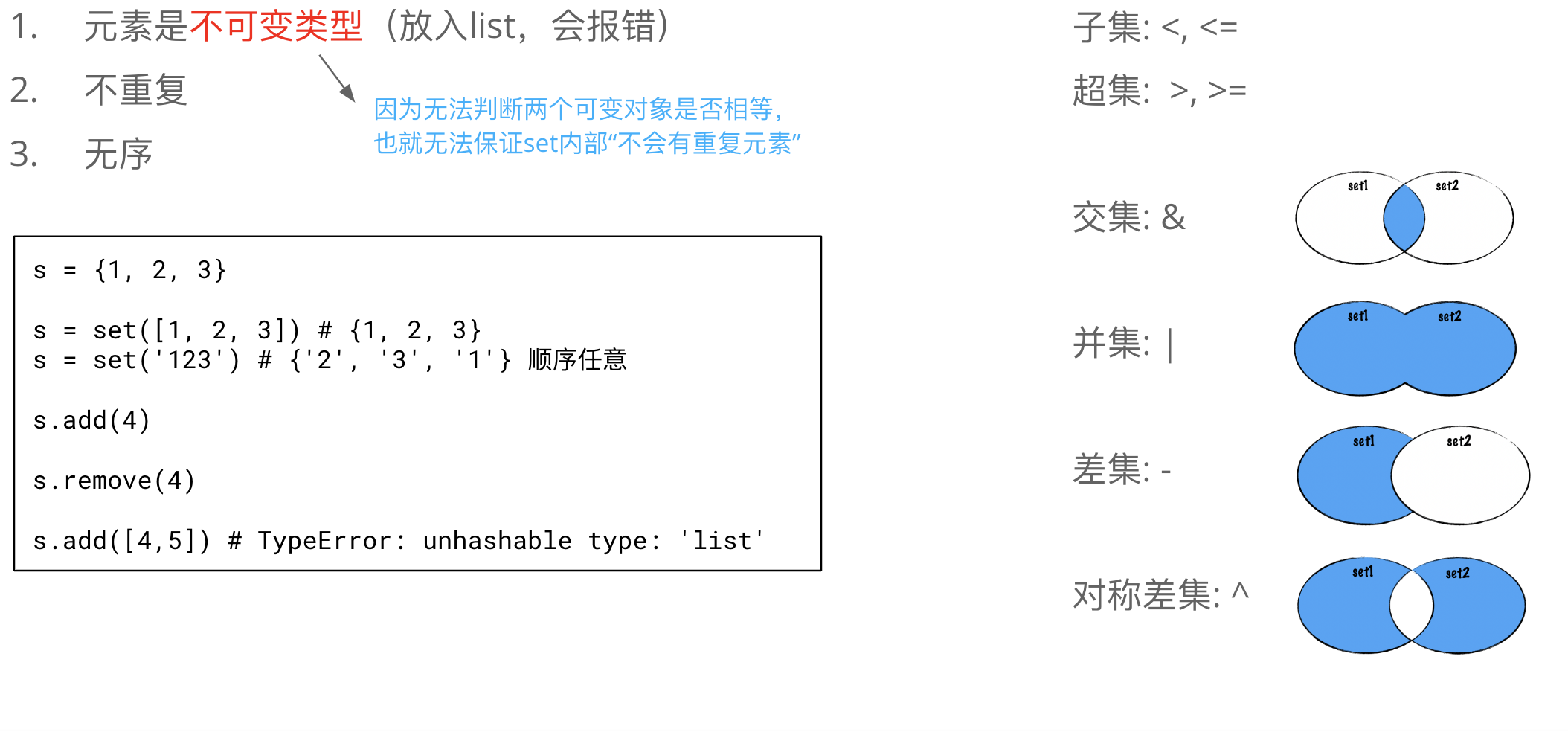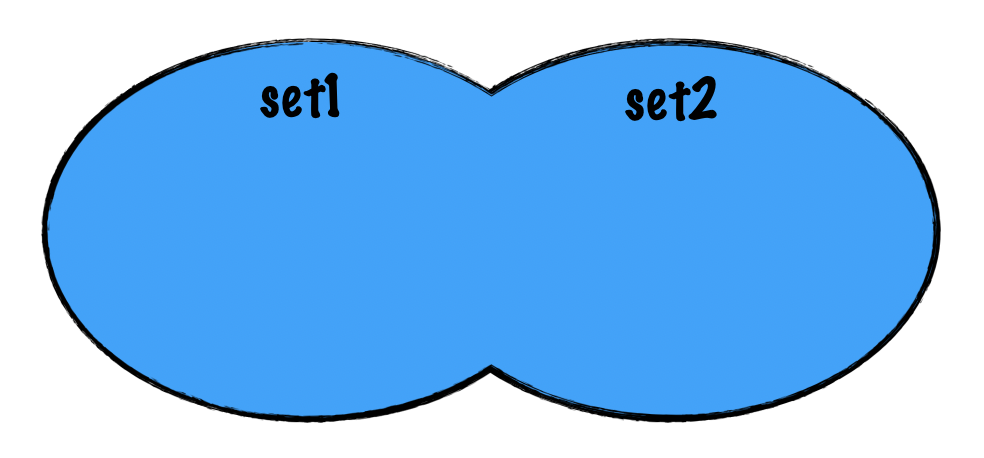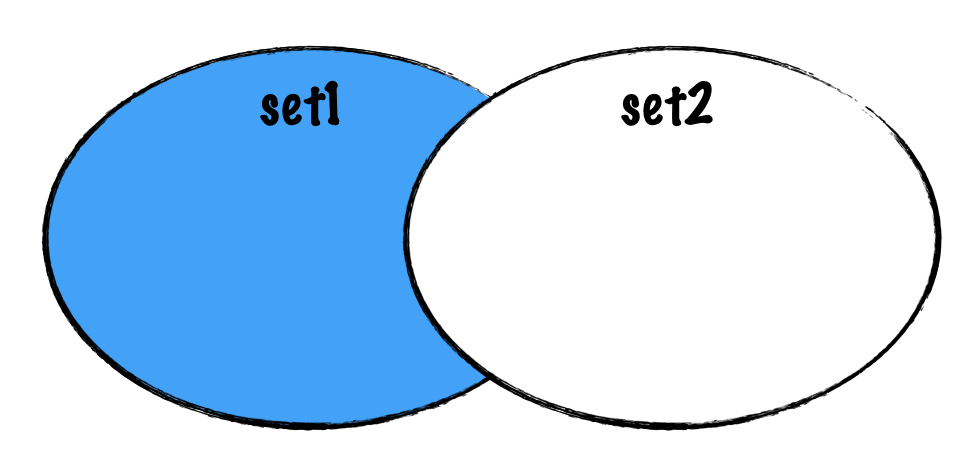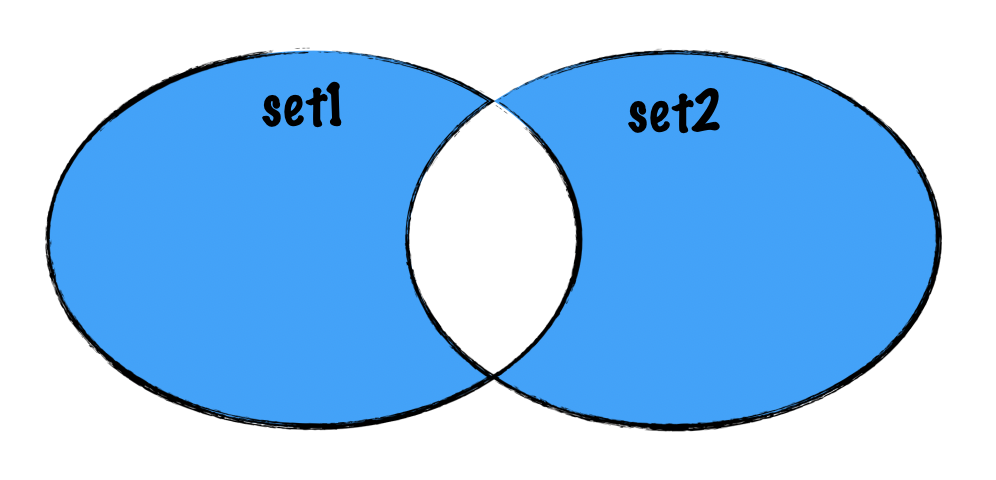Python set 集合特点与运算

Set(集合)是一个无序的不重复元素序列。
创建
可以使用大括号 { } 或者 set() 函数创建集合:
set1 = {value1, value2, ...}
# or
set2 = set(value)
- set2 中的
value必须是 iterable,比如 string, list,不能是 int。 - 创建一个空集合必须用
set()而不是{ },因为{ }是用来创建一个空字典。
>>> print({1, 2, 3})
{1, 2, 3}
>>> print(set([1, 2, 3]))
{1, 2, 3}
去重
集合具有天然去重的功能:
>>> basket = {'apple', 'orange', 'apple', 'pear', 'orange', 'banana'}
>>> print(basket)
{'orange', 'banana', 'pear', 'apple'}
元素与集合关系
in ∈
判断元素 x 是否在集合 s 中,存在返回 True,不存在返回 False。类似数学中的 ∈ 符号。
x in s
>>> 'apple' in basket
True
>>> 'peach' in basket
False
not in ∉
判断元素 x 是否不在集合 s 中,类似数学中的 ∉ 符号。
x not in s
>>> 'apple' not in basket
False
>>> 'peach' not in basket
True
集合间运算
>>> set1 = set('abcde')
>>> set2 = set('defgh')
>>> set1
{'a', 'b', 'c', 'd', 'e'}
>>> set2
{'d', 'e', 'f', 'g', 'h'}
<, <= 子集
>>> set1 < set2
False
>>> set('def') < set2
True
set1.issubset(set2)
判断 set1 是否为 set2 的子集。
>>> set1.issubset(set2)
False
>>> set('def').issubset(set2)
False
>, >= 超集
>>> set1 > set2
False
>>> set('defghijk') > set2
True
set1.issuperset(set2)
判断 set1 是否为 set2 的超集。
>>> set1.issuperset(set2)
False
>>> set('defghijk').issuperset(set2)
True
& 交集
集合 set1 和 set2 中都包含了的元素,如下图所示:

>>> set1 & set2
{'d', 'e'}
set1.intersection(set2, set3 ... etc)
>>> set1.intersection(set2)
{'d', 'e'}
set1.intersection_update(set2, set3 ... etc)
intersection_update() 方法其实就是将 intersection() 方法返回的新集合,重新赋值给 set1。该方法没有返回值。
>>> set1.intersection_update(set2)
>>> set1
{'d', 'e'}
set1.isdisjoint(set2)
判断两个集合是否包含相同的元素,如果没有返回 True,否则返回 False。
>>> set1.isdisjoint(set2)
False
| 并集
集合 set1 或 set2 中包含的所有元素,如下图所示:

>>> set1 | set2
{'a', 'b', 'c', 'd', 'e', 'f', 'g', 'h'}
set1.union(set2, set3 ... etc)
>>> set1.union(set2)
{'a', 'b', 'c', 'd', 'e', 'f', 'g', 'h'}
- 差集
集合 set1 中包含而集合 set2 中不包含的元素,如下图所示:

>>> set1 - set2
{'a', 'b', 'c'}
set1.difference(set2)
>>> set1.difference(set2)
{'a', 'b', 'c'}
set1.difference_update(set2)
difference_update() 方法其实就是将 difference() 方法返回的新集合,重新赋值给 set1。该方法没有返回值。
>>> set1.difference_update(set2)
>>> set1
{'a', 'b', 'c'}
^ 对称差集
不同时��包含于 set1 和 set2 的元素,如下图所示:

>>> set1 ^ set2
{'a', 'b', 'c', 'f', 'g', 'h'}
set1.symmetric_difference(set2)
>>> set1.symmetric_difference(set2)
{'a', 'b', 'c', 'f', 'g', 'h'}
set1.symmetric_difference_update(set2)
symmetric_difference_update() 方法其实就是将 symmetric_difference() 方法返回的新集合,重新赋值给 set1。该方法没有返回值。
>>> set1.symmetric_difference_update(set2)
>>> set1
{'a', 'b', 'c', 'f', 'g', 'h'}
集合推导式
类似列表推导式,同样集合支持集合推导式(Set comprehension):
>>> a = {x for x in 'abracadabra' if x not in 'abc'}
>>> a
{'r', 'd'}
函数
len(set)
>>> basket = {'apple', 'orange', 'pear', 'banana'}
>>> len(basket)
4
其他方法
set.add(elem)
为集合添加元素:
>>> basket = {'apple', 'orange', 'pear', 'banana'}
>>> basket.add('peach')
>>> basket
{'apple', 'banana', 'orange', 'peach', 'pear'}
set.update(elem)
给集合添加元素,且参数可以是列表,元组,字典等,语法格式如下:
>>> basket = {'apple', 'orange', 'pear', 'banana'}
>>> basket.update({1, 2})
>>> basket
{1, 2, 'apple', 'banana', 'orange', 'pear'}
>>> basket = {'apple', 'orange', 'pear', 'banana'}
>>> basket.update([1, 2], [3, 4])
>>> basket
{1, 2, 3, 4, 'apple', 'banana', 'orange', 'pear'}
set.remove(elem)
将元素 x 从集合 set 中移除,如果元素不存在,则会发生错误。
>>> basket = {'apple', 'orange', 'pear', 'banana'}
>>> basket.remove('apple')
>>> basket
{'banana', 'orange', 'pear'}
>>> basket.remove('apple')
---------------------------------------------------------------------------
KeyError Traceback (most recent call last)
<ipython-input-54-0ec2f8a956bf> in <module>
----> 1 basket.remove('apple')
KeyError: 'apple'
set.discard(elem)
移除集合中的元素,且如果元素不存在,不会发生错误。
>>> basket = {'apple', 'orange', 'pear', 'banana'}
>>> basket.discard('apple')
>>> basket
{'banana', 'orange', 'pear'}
>>> basket.discard('apple') # 不存在不会发生错误
>>> basket
{'banana', 'orange', 'pear'}
set.pop()
随机移除元素,多次执行测试结果都不一样。因为 pop 方法会对集合进行无序的排列,然后将这个无序排列集合的左面第一个元素进行删除。
>>> basket = {'apple', 'orange', 'pear', 'banana'}
>>> basket.pop()
'pear'
set.clear()
清空集合中的所有元素:
>>> basket = {'apple', 'orange', 'pear', 'banana'}
>>> basket.clear()
>>> basket
set()
set.copy()
拷贝一个集合:
>>> basket = {'apple', 'orange', 'pear', 'banana'}
>>> basket_copy = basket.copy()
>>> basket_copy
{'apple', 'banana', 'orange', 'pear'}